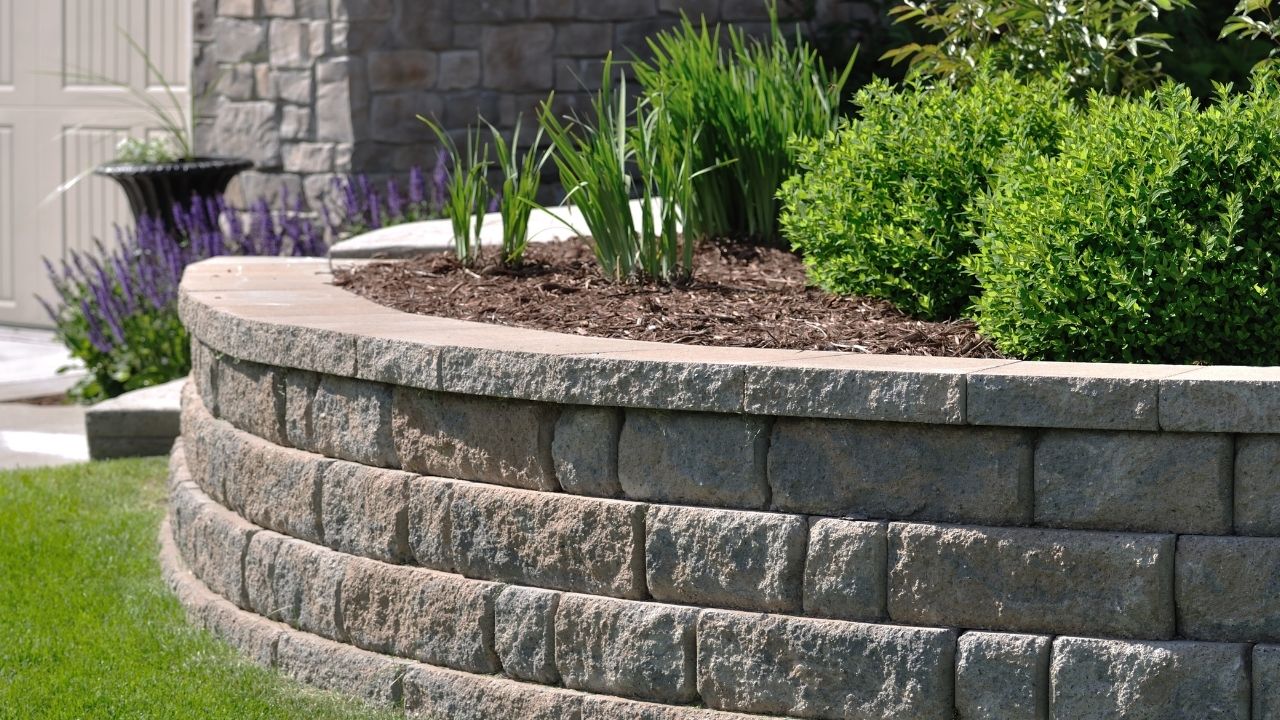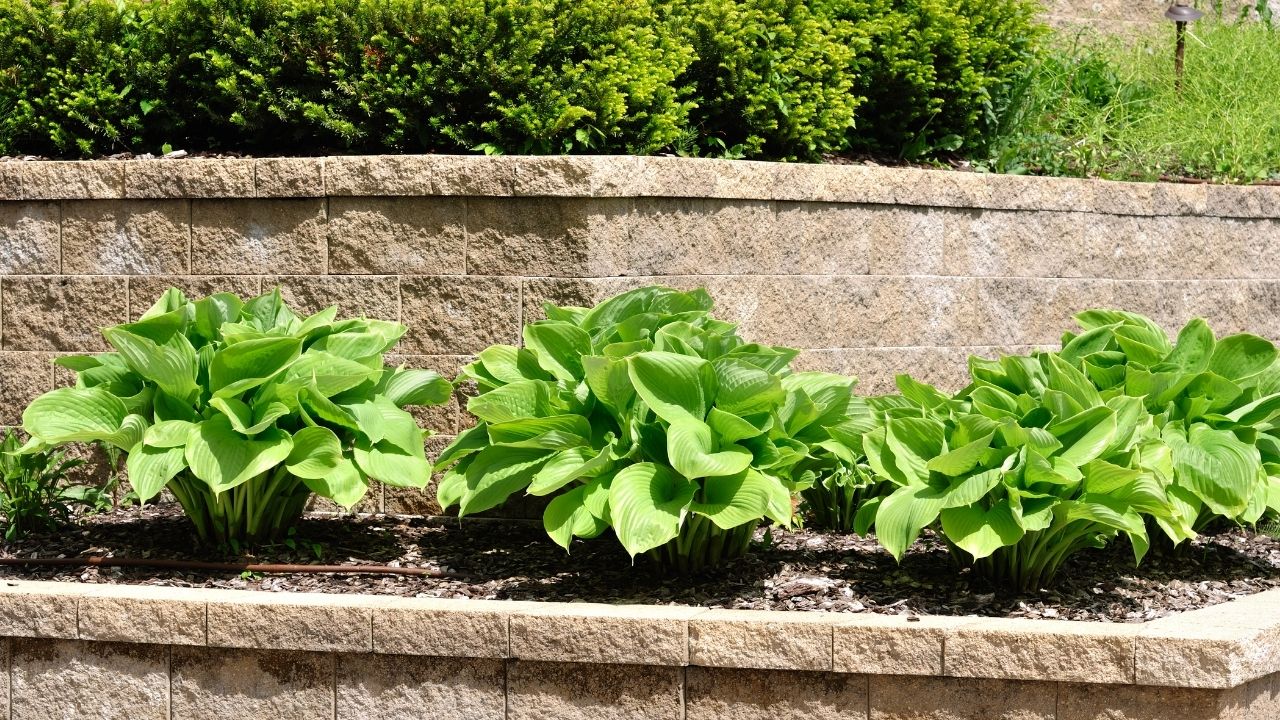There are different types of retaining walls that are practical and beautiful additions to any residential or commercial landscape. They offer the perfect solution to stop soil erosion when there is a change in ground elevation that exceeds the repose of the soil angle.
However, not every wall is the right one for your property. We invite you to keep reading this blog to learn more about the different types of retaining walls. After reading this, you will be able to identify the best option for your yard or garden.
What Is a Retaining Wall?
Retaining walls are freestanding structures built to maintain the soil behind them. Depending on the height of the wall, they can support a tremendous amount of weight and pressure. That is why it is vital to ensure proper construction.
Moreover, they provide some guidance because of the design which surrounds the garden. Indeed, different layouts, materials, and types exist, and each one has a purpose in every garden. As mentioned above, a study should be made by a landscaping contractor to see what fits better.
Make sure you install the best retaining wall for your project by implementing the proper construction methods.
Why Should I Get a Retaining Wall?

You should get a retaining wall if you want to design soil level to create a stunning garden and protect the soil. Besides, you will have a structured and aesthetic patio. In this way, you will have an incredible advantage, which is the optimal utilization of space.
Retaining walls come with different advantages. However, the installation process can be a little endeavor when it comes to building costs. Therefore, before investing any time and money into a new retaining wall, consider the most popular types of walls that suit your needs best.
The best part is that they are eco-friendly, and they add value to your house!
What Are Retaining Walls Made Of?
Depending on what you want to achieve, retaining walls can be made from concrete blocks and stone bricks. Each material has its benefits and style. But, there is indeed a better option for your project. You just need to know the goals and budget of your project.
Additionally, poured concrete is the most common, durable, and used material to build retaining walls. Also, treated timber might be excellent.
5 Most Popular Types of Retaining Walls

Gravity Retaining Wall
Gravity walls depend on how much they resist the pressure coming from behind. These types of walls do not require any rigid footing because they are kind of flexible. They are often made of mortar-less stone, masonry, and concrete segment units for the harsh landscape walls.
Gravity retaining walls are excellent, as the name suggests for gravitational soil pressure. The walls are relatively low-cost, and the average cost goes from $15 to $40 per square foot.
Piled Retaining Wall
Piled walls are an excellent option for helping you hold back the soil. Landscapers use more enormous piles to secure the wall structure into the ground deeply. One of the most common piled retaining walls is sheet piling. Their wall designs help to equilibrate the earth and water pressure.
Moreover, piled retaining walls are cost-effective, and they are great for constructing on challenging ground conditions. This one in specific could also be called sheet piling retaining wall, and not only do they hold the soil, but also protect the adjoining structures.
Anchored Retaining Wall
You can build anchored walls in any of the styles mentioned above. Still, these walls also require additional strength, provided by cables or others anchored in the rock or soil behind.
Anchors are then inflated at the end of the route, either mechanically or by injecting pressure cement, which expands to create a bulb in the earth, typically by drilling into the substance.
Mechanical Stabilization Wall
Mechanically Stabilized Earth (MSE) Walls can tolerate some differential movements. These walls are filled with granular soil from the face, while the backfill soil is retained. The main and best advantage of mechanical stabilization walls is that they do not require any framework.
Furthermore, this retaining wall offers different benefits like soil reinforcement, flexibility to adapt the structure to different areas, extreme loads, and many others. They are great for distributing the pressure in the foundation area.
Many constructor agencies adapt the geometrical forms in areas where they built overpasses.
Concrete Cantilever Retaining Wall
This retaining wall connects the foundation. It holds back some amount of soil, so it requires a well-engineered person to do so. Deep excavations reinforce the concrete and provide resistance when sliding.
Cantilever walls have a T form that allows the structure to follow the principles of leverage.
What Is the Best Retaining Wall Material for My House?
Every retaining wall material is designed for each type of construction, but you count on retaining walls made from poured concrete, timber, and concrete. For residential houses, stones are perfect for creating the wall because some stones give an aesthetically pleasing nice-looking view.
The best option is to work with a landscaping professional to see what perfectly fits your house and structure. Remember that retaining walls will help you to landscape your yard by giving an organized and great view. So, some material designs are specialized for providing that structure.
Get Professional Assistance
As you can see above, there exist various types of retaining walls. So, are you ready to have a beautiful and practical retaining wall to enhance the value of your home? Don’t be afraid to remodel your garden and structure the area.
Allow experts to handle your project! Give us a call and set an appointment to work with expert landscape contractors. We are looking forward to working with you. We will be more than happy to help you with the different designs, colors, and landscaping materials. Trust in our work.



